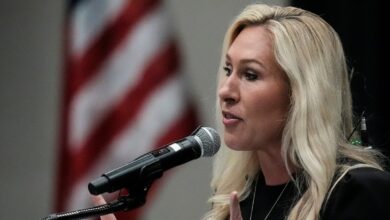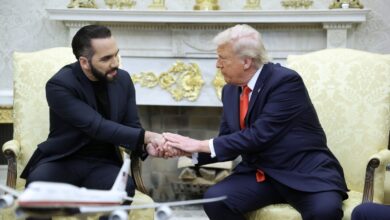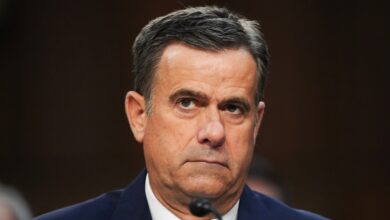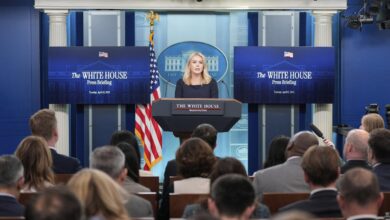Opinion | The Damage From Trump’s Tariff Pause Is Already Done
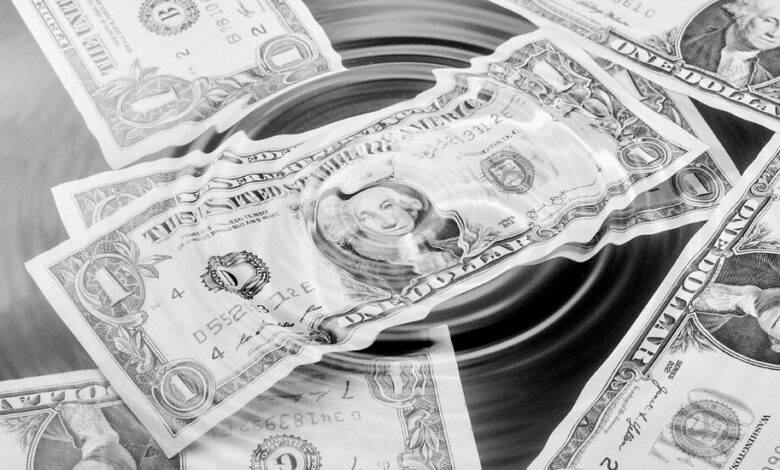
Growing up in Florida, I lived through some bad hurricanes. The worst of them altered the shape of the land, destroyed islands and left channels that hadn’t existed before.
That’s what the past several weeks have felt like in my work as an economist and investor. Since President Trump took office in January, we saw a building storm that hit landfall last week on “Liberation Day.” Shockingly large and broad tariffs fueled investor concerns about economic growth, drove extreme market volatility and set off a “dash for cash” that caused selling even in traditionally safe assets such as U.S. Treasury bonds and gold.
And then just as suddenly, the president announced a 90-day pause on most of the tariffs, offering hope that we’ve survived the worst of the storm. Fears of stagflation, meaning the toxic combination of lower growth and rising inflation, may abate. But as in the aftermath of a Category 5 hurricane, we may yet discover that the landscape has been fundamentally altered — potentially in ways that limit the growth of the American economy.
In financial markets, the most important place to check for damage is the market for U.S. Treasuries. The U.S. government bond market is by far the world’s largest. Treasury yields serve as an anchor for borrowing costs for American households and companies and for governments overseas. Hints of distress in Treasuries can quickly create contagion around the world and amplify investor worries about global growth back at home.
Not surprisingly, then, when the U.S. 30-year Treasury bond yield briefly rose above 5 percent before the tariff pause — its sharpest increase since 2020, according to Bloomberg — bond markets beyond America’s borders reacted as well. Britain’s 30-year government bond yield spiked to its highest level since 1998.
Even if American tariff levels settle at a lower level than what was proposed on April 2, questions about what’s next, as well as the impact of the remaining tariffs, could keep growth and inflation uncertainty alive. The Minneapolis Federal Reserve president, Neel Kashkari, made that point this week when he wrote that “the shock to confidence could potentially have an even larger effect on the economy than the tariffs themselves.” And when people and businesses lose confidence, he continued, they tend to stop spending and investing.
Mr. Kashkari reinforced the minutes from the most recent Federal Reserve policy meeting, in which officials worried about more unemployment, slower economic growth, renewed inflation and high uncertainty about all these forecasts.
A central bank moving cautiously could disappoint the market, which is expecting at least three rate cuts of a quarter-point this year. Higher short-term interest rates would ultimately mean higher business and consumer borrowing costs, such as for anyone seeking a mortgage.
The Liberation Day hurricane is one of a number of White House decisions that have raised questions about the web of post-World War II relationships that make up the international trade system. These moves could reduce foreign demand for U.S. Treasuries, the bedrock of American finance.
China is most in focus, given that its central bank holds roughly $760 billion in U.S. Treasuries as of January (along with other dollar-denominated assets) and now faces a tariff rate of 125 percent for its goods going to America.
China is unlikely to suddenly sell large amounts of its American bonds — there simply aren’t enough liquid, stable financial alternatives, and the mere act of selling could hurt the market and thus China, too. But the central bank does seem likely to continue diversifying its reserves, including into gold, another traditional safe-haven asset. It has been a large buyer of gold for the past few years, adding another five tons to its holdings just in February.
Less enthusiasm for U.S. bonds from overseas would come at a bad time. The Congressional Budget Office forecasts that American debt expressed as a percent of gross domestic product will rise to 118 percent by 2035, even before accounting for the coming tax and spending deal being negotiated by Republicans in Congress. That suggests interest payments on the debt will rise to 4.1 percent of the G.D.P., leaving less revenue available for the government to spend on projects that could support growth.
America continues to enjoy many advantages that allow it to weather macroeconomic problems better than many of its peers, including broad and deep capital markets and a culture of business innovation. Mr. Trump hopes to build on that, with bilateral trade deals that help American companies do more business and face less regulatory friction.
For households hoping to get a new-car loan, or for small companies looking to grow, let’s also hope this administration reflects on how such an unpredictable policy path can do material, lasting damage, and changes course before it allows another storm to hit.
Rebecca Patterson is an economist and senior fellow at the Council on Foreign Relations who has held senior roles at JPMorgan Chase and Bridgewater Associates.
The Times is committed to publishing a diversity of letters to the editor. We’d like to hear what you think about this or any of our articles. Here are some tips. And here’s our email: [email protected].
Follow the New York Times Opinion section on Facebook, Instagram, TikTok, Bluesky, WhatsApp and Threads.

